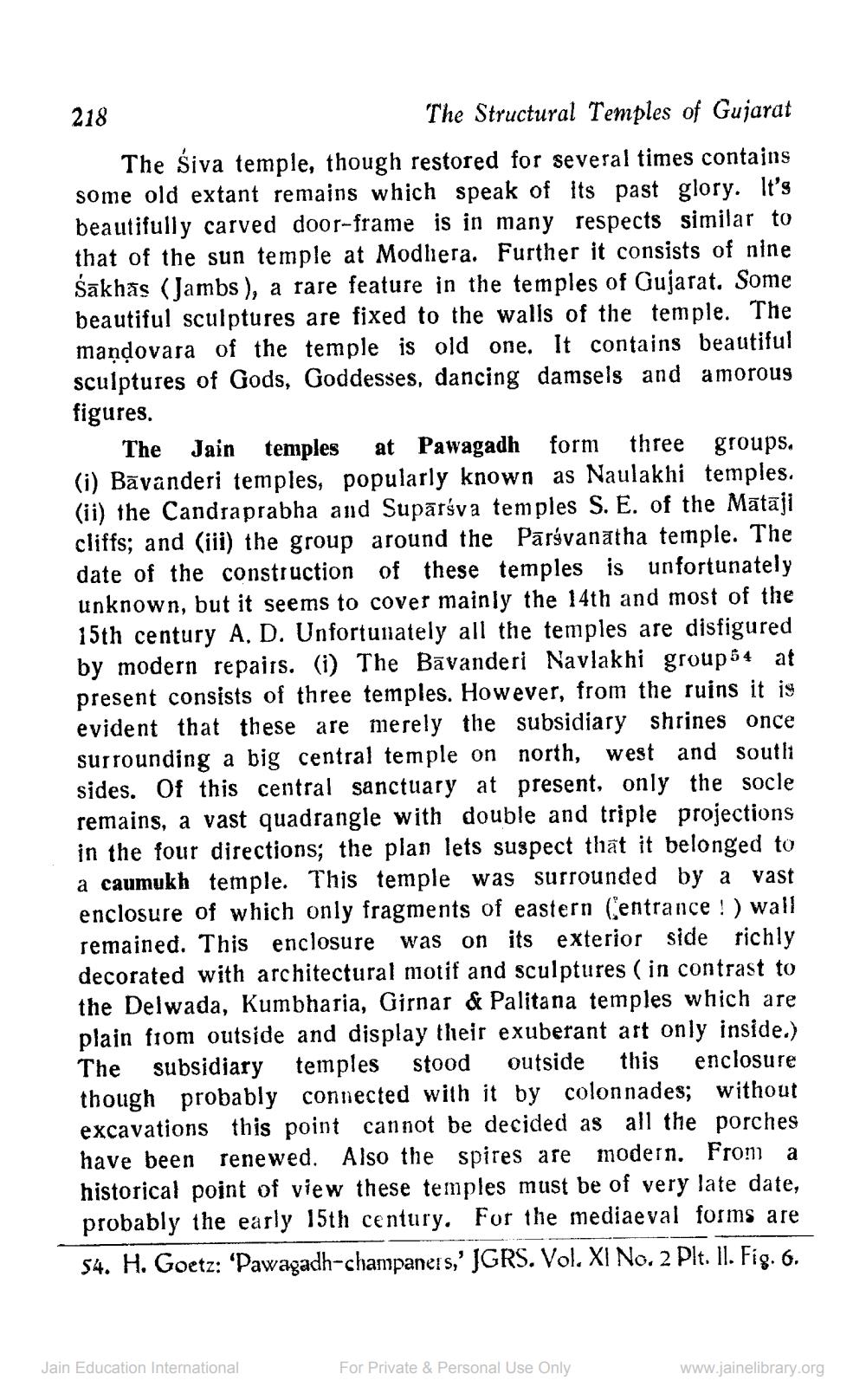________________
218
The Structural Temples of Gujarat
The Siva temple, though restored for several times contains some old extant remains which speak of its past glory. It's beautifully carved door-frame is in many respects similar to that of the sun temple at Modhera. Further it consists of nine Sākhas (Jambs), a rare feature in the temples of Gujarat. Some beautiful sculptures are fixed to the walls of the temple. The maņdovara of the temple is old one. It contains beautiful sculptures of Gods, Goddesses, dancing damsels and amorous figures.
The Jain temples at Pawagadh form three groups. (i) Bāvanderi temples, popularly known as Naulakhi temples. (ii) the Candraprabha and Supārśva temples S. E. of the Mātāji cliffs; and (iii) the group around the Pārsvanatha temple. The date of the construction of these temples is unfortunately unknown, but it seems to cover mainly the 14th and most of the 15th century A. D. Unfortunately all the temples are disfigured by modern repairs. (i) The Bāvanderi Navlakhi group 54 at present consists of three temples. However, from the ruins it is evident that these are merely the subsidiary shrines once surrounding a big central temple on north, west and south sides. Of this central sanctuary at present, only the socle remains, a vast quadrangle with double and triple projections in the four directions; the plan lets suspect that it belonged to a caumukh temple. This temple was surrounded by a vast enclosure of which only fragments of eastern entrance ! ) wall remained. This enclosure was on its exterior side richly decorated with architectural motif and sculptures ( in contrast to the Delwada, Kumbharia, Girnar & Palitana temples which are plain from outside and display their exuberant att only inside.) The subsidiary temples stood outside this enclosure though probably connected with it by colonnades; without excavations this point cannot be decided as all the porches have been renewed. Also the spires are modern. From a historical point of view these temples must be of very late date, probably the early 15th century. For the mediaeval forms are 54. H. Goetz: 'Pawagadh-champaners,' JGRS. Vol. XI No. 2 Plt. 11. Fig. 6.
Jain Education International
For Private & Personal Use Only
www.jainelibrary.org




